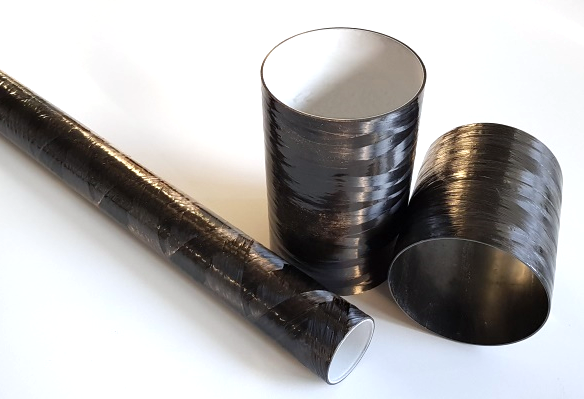Components made of fiber-reinforced polymer matrix composite with metallic, ceramic and cermetic coating
Abstract
This coating process makes selective use of the flexible production and shaping processes of FRP materials and separates the thermal load of the coating process from the substrate manufacturing process. As a result, high adhesion strengths of the functional layers on different FRP systems are reached.
Advantages
- High bond strength is guaranteed
- High surface quality of the coating achievable by transplanting micro- and macrostructures from the core to the coating.
- Ideal solution for media-lubricated tribo pairings or decorative surfaces, etc.
- No time-consuming mechanical finishing
- No harmful temperature effects
- Any polymer matrix materials and fiber systems can be used
Fields of application
The present invention describes a new process for the production of wear and corrosion resistant hybrid FRP components. It is particularly suitable for areas where a lightweight design is to be combined with high functionality and robustness of the surface.
Background
Fiber-reinforced plastics (FRP) are promising lightweight materials. The raw materials and manufacturing technologies are relatively affordable and widely available in all industrialized countries.
Problem
Based on the current state of the art, attempts are being made to functionalize the surfaces of FRP components by means of various coating processes. However, this procedure often fails to meet key requirements, for example in terms a sufficiently high level of adhesion strength of the coating to the FRP substrate. As such coated FRP components cannot be produced using conventional technology, their production involves high additional costs.
Solution
A new coating process has been developed at the Institute for Manufacturing Technologies of Ceramic Components and Composites (IMTCCC) at the University of Stuttgart which is based on a flexible production and molding processes of the coated FRP materials. Here, production of the FRP components and their coating is carried out in separate process steps, thus preventing thermal stress to the FRP material. A metallic, ceramic or cermetic functional layer is applied to a mold or core (complex shaped geometries are possible) of metal, plastic, ceramic or salts by thermal spraying, followed application of a bonding coating. The coated core is then wrapped with fibers soaked in resin (e.g. carbon fiber with epoxy resin). After hardening of the polymer and demolding from the carrier core the coating system is transferred to the FRP component. This results in smooth, "net-shaped" surfaces without cost-intensive post-processing,
The FRP composite production is thus independent of the coating process or the coating material: any matrix material and fiber systems can be processed. In addition, the coated molds can be supplied as semi-finished products so that they can be flexibly integrated into the manufacturing process chain.

